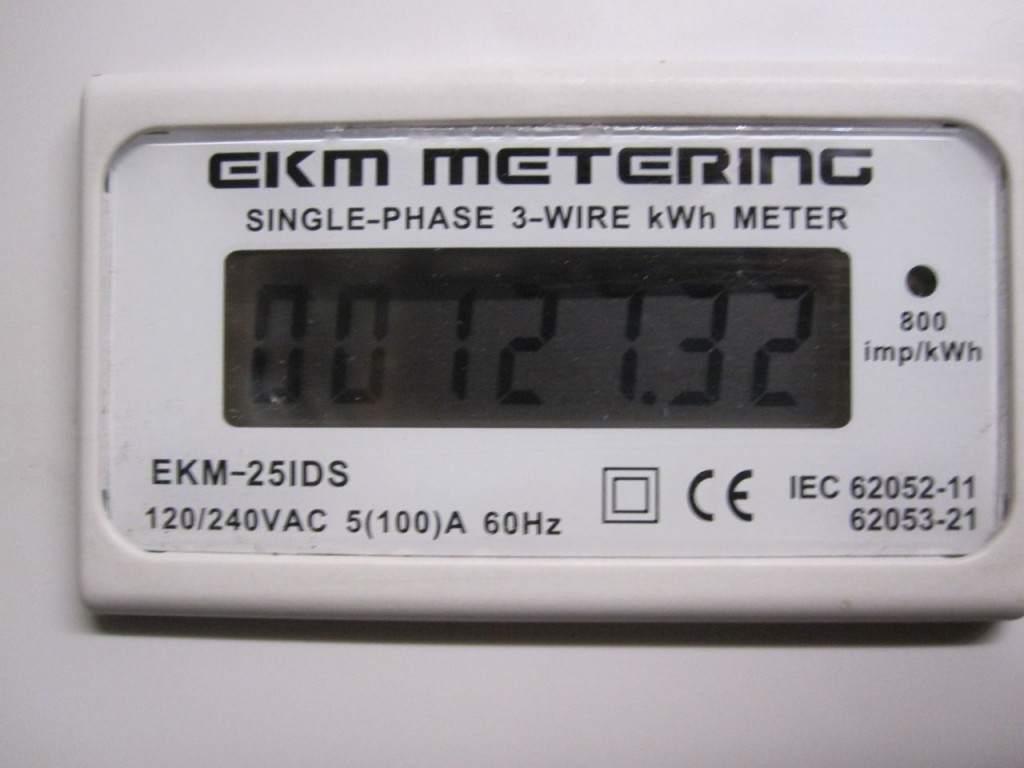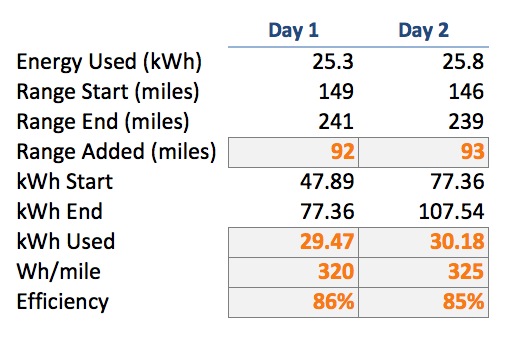Lifestyle
EKM Digital Submeter Measures EV Charging Efficiency
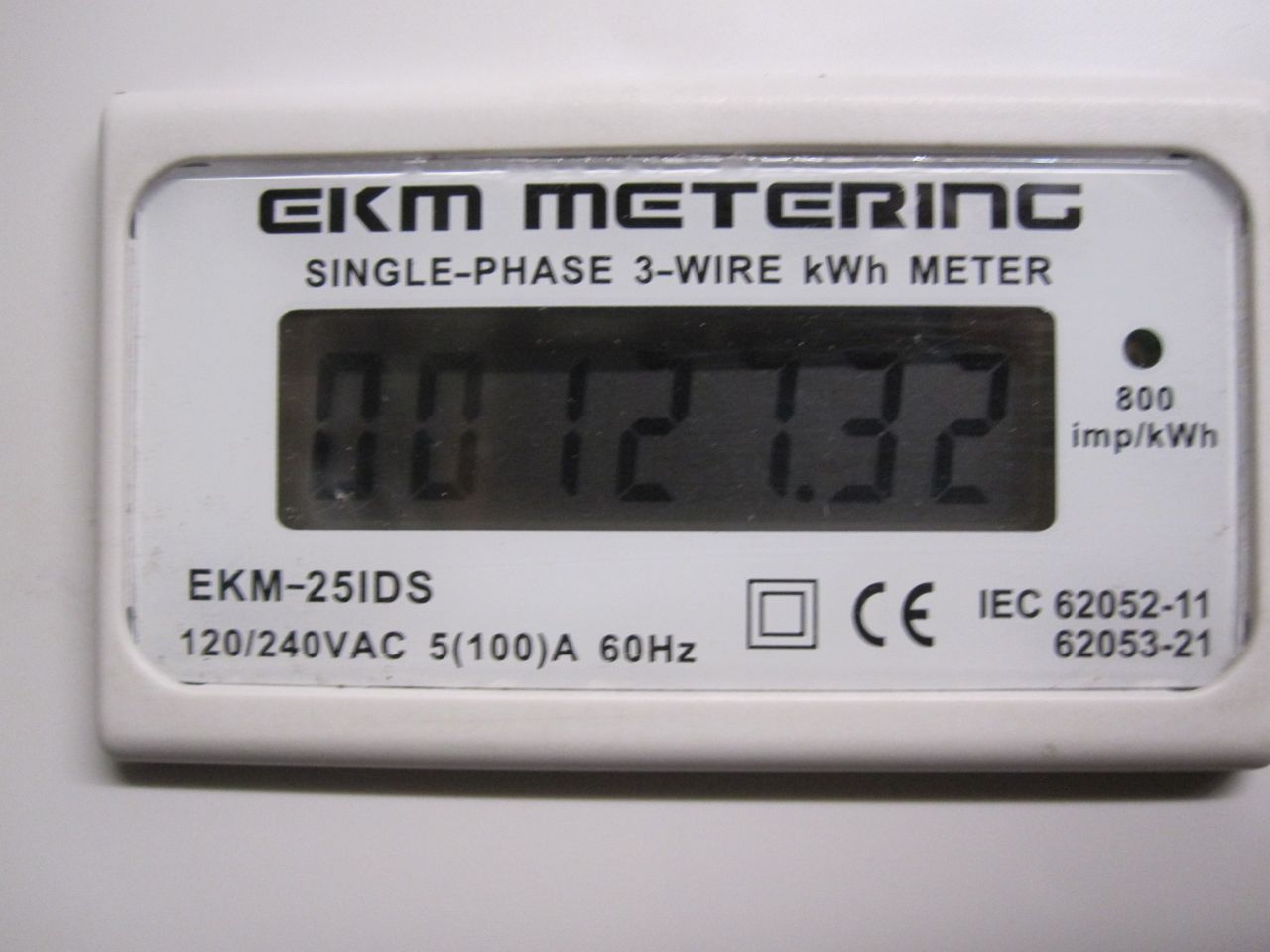
Electric vehicle owners may now know that 10-12% of drawn electricity is lost during the charging process when AC is converted to DC.
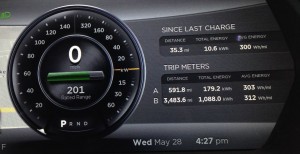 The “Since Last Charge” indicator on the Tesla Model S driver’s console keeps count of distance, energy used and average energy used per mile since the last time you unplugged, but matching this energy consumption to what you’re being billed by your company is more difficult than one might think.
The “Since Last Charge” indicator on the Tesla Model S driver’s console keeps count of distance, energy used and average energy used per mile since the last time you unplugged, but matching this energy consumption to what you’re being billed by your company is more difficult than one might think.
Taking the 10.6kWh Total Energy readout from the dash and multiplying it by my billable electricity rate of $0.1670/kWh, I would think that it costs me $1.77 to drive 35.3 miles. However the actual costs are slightly higher because of the power conversion losses when charging. Charging via a standard 110V wall plug in the US is reported to be much less efficient than a NEMA 14-50 hence you’ll be using even more energy to reach the same state of charge.
Tesla’s charging calculator appears to take into account some of these charging loses. According to the calculator, 35 miles of range added to the Model S requires 11.6kWh of energy although I was able to achieve that with through 10.6 kWh as seen through my dash readout. This could imply a 91% charge efficiency but of course this is a very loose calculation and based on many assumptions such as the speed in which you drive, elevation changes and weather. It’s not simple to calculate how much actual energy you’re using to charge your Tesla Model S.
The EKM Digital Submeter
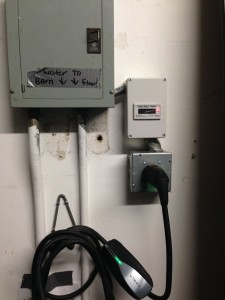 The solution I found was to put a submeter between the EV charge outlet and main power supply. There are many types of meters on the market from basic kWh counters to advanced meters that can broadcast actual use over a wifi network, plot graphs, etc. After doing some extensive research, I decided to go with a metering solution from EKM Metering. My electrician did some independent research and came up with the same brand so I felt pretty good about my choice. I ended up purchasing the 100A kWh EKM digital submeter and enclosure.
The solution I found was to put a submeter between the EV charge outlet and main power supply. There are many types of meters on the market from basic kWh counters to advanced meters that can broadcast actual use over a wifi network, plot graphs, etc. After doing some extensive research, I decided to go with a metering solution from EKM Metering. My electrician did some independent research and came up with the same brand so I felt pretty good about my choice. I ended up purchasing the 100A kWh EKM digital submeter and enclosure.
My electrician was able to complete the installation in 3 hours with a portion of the time spent on retrofitting the EKM enclosure to accommodate for the larger 240v conduit. Total cost spent for products, labor and materials was $292.
How Does it Work?
The EKM submeter is like an odometer but with an energy readout that continuously increments as power is being drawn. There is no reset button. A blinking red light indicates that 1.25Wh is drawn per single blink of the LED.
Measuring actual energy consumed over a specific time period requires taking some notes. Here are the the measurements and results of my tests:
My results indicate that there’s approximately a 85% charging efficiency for my Tesla Model S which is less than the 91% efficiency that Tesla Motors seems to be using in their online calculator.
I’ll be performing several more tests over a longer period of time. I want to look at power draw differences while the Model S is asleep and also analyze variations in energy consumption due to software updates.
Conclusion
Overall the EKM Digital Submeter is a nice addition to any EV charging setup if you’re looking for a true picture of how much energy usage is going into your Tesla Model S / electrical vehicle. Assuming a $0.167/kWh electricity cost and 325 Wh/mile, the cost of the meter plus installation would require 5,380 miles of EV driving to break even.
If you’re looking for a cheaper alternative, simply add 15% to the energy usage readout on your EV to approximate the true energy cost per EV mile driven. Drive clean and drive smart!

Lifestyle
Tesla Model S Plaid battles China’s 1500 hp monster Nurburgring monster, with surprising results
There is just something about Tesla’s tuning and refinement that makes raw specs seem not as game-changing.

The Tesla Model S Plaid has been around for some time. Today, it is no longer the world’s quickest four-door electric sedan, nor is it the most powerful. As per a recent video from motoring YouTube channel Carwow, however, it seems like the Model S Plaid is still more than a match for some of its newer and more powerful rivals.
The monster from China
The Xiaomi SU7 Ultra is nothing short of a monster. Just like the Model S Plaid, it features three motors. It also has 1,548 hp and 1,770 Nm of torque. It’s All Wheel Drive and weighs a hefty 2,360 kg. The vehicle, which costs just about the equivalent of £55,000, has been recorded setting an insane 7:04.957 at the Nurburgring, surpassing the previous record held by the Porsche Taycan Turbo GT.
For all intents and purposes, the Model S Plaid looked outgunned in Carwow’s test. The Model S Plaid is no slouch with its three motors that produce 1,020 hp and 1,420 Nm of torque. It’s also a bit lighter at 2,190 kg despite its larger size. However, as the Carwow host pointed out, the Model S Plaid holds a 7:25.231 record in the Nurburgring. Compared to the Xiaomi SU7 Ultra’s record, the Model S Plaid’s lap time is notably slower.
Real-world tests
As could be seen in Carwow’s drag races, however, Tesla’s tech wizardry with the Model S Plaid is still hard to beat. The two vehicles competed in nine races, and the older Model S Plaid actually beat its newer, more powerful counterpart from China several times. At one point in the race, the Xiaomi SU7 Ultra hit its power limit due to its battery’s temperature, but the Model S Plaid was still going strong.
The Model S Plaid was first teased five years ago, in September 2020 during Tesla’s Battery Day. Since then, cars like the Lucid Air Sapphire and the Xiaomi SU7 Ultra have been released, surpassing its specs. But just like the Model Y ended up being the better all-rounder compared to the BYD Sealion 7 and the MG IM6, there is just something about Tesla’s tuning and refinement that makes raw specs seem not as game-changing.
Check out Carwow’s Model S Plaid vs Xiaomi SU7 drag race video below.
Lifestyle
500-mile test proves why Tesla Model Y still humiliates rivals in Europe
On paper, the BYD Sealion 7 and MG IM6 promised standout capabilities against the Model Y.

BYD is seeing a lot of momentum in Europe, so much so that mainstream media has taken every opportunity to argue that the Chinese automaker has beaten Tesla in the region. But while BYD sales this year in Europe are rising and Tesla’s registrations remain challenged, the raw capabilities of vehicles like the Model Y are difficult to deny.
This was highlighted in a 500-mile challenge by What Car? magazine, which showed that the new Tesla Model Y is more efficient, cheaper to run, and more reliable than rivals like the BYD Sealion 7, and even the nearly 400 KW-charging MG IM6.
Range and charging promises
On paper, the BYD Sealion 7 and MG IM6 promised standout capabilities against the Model Y. The Sealion 7 had more estimated range and the IM6 promised significantly faster charging. When faced with real-world conditions, however, it was still the Model Y that proved superior.
During the 500-mile test, the BYD nearly failed to reach a charging stop, arriving with less range than its display projected, as noted in a CarUp report. MG fared better, but its charging speeds never reached its promised nearly-400 kW charging speed. Tesla’s Model Y, by comparison, managed energy calculations precisely and arrived at each stop without issue.
Tesla leads in areas that matter
Charging times from 25% to 80% showed that the MG was the fastest at 17 minutes, while Tesla and BYD were close at 28 and 29 minutes, respectively. Overall efficiency and cost told a different story, however. The Model Y consumed 19.4 kWh per 100 km, compared to 22.2 for MG and 23.9 for BYD. Over the full trip, Tesla’s charging costs totaled just £82 thanks to its supercharger network, far below BYD’s £130 and MG’s £119.
What Car? Magazine’s testers concluded that despite BYD’s rapid sales growth and the MG IM6’s seriously impressive charging speeds, Tesla remains the more compelling real-world choice. The Model Y just offers stability, efficiency, and a proven charging infrastructure through its Supercharging network. And as per the magazine’s hosts, the Model Y is even the cheapest car to own among the three that were tested.
Watch What Car? Magazine’s 500-mile test in the video below.
Lifestyle
Tesla Cybertruck slapped with world’s least intimidating ticket, and it’s pure cringe
One cannot help but cringe and feel second-hand embarrassment at the idea of a person just driving around with a stack of these babies.

A Cybertruck parked at Stanford Shopping Center in California was recently hit with what might be the most try-hard piece of paper ever slipped under a wiper blade: a “fake citation” accusing the driver of supporting a “fascist car.”
The note, shared on X by Tesla staff program manager Ryan Torres, quickly made the rounds on X, where it quickly gained attention as an example of how not to protest.
The world’s least intimidating ticket
According to the citation, the supposed “violation” was “driving a fascist car.” The remedial action? Take the bus, call an Uber, or ride a bike. The note also dubbed Elon Musk a “chainsaw-wielding Nazi billionaire.” Now, protests against Tesla and Elon Musk have become commonplace this year, but one cannot help but cringe and feel second-hand embarrassment at the idea of a person just driving around with a stack of fake anti-Tesla/Musk citations.
Torres pointed out the irony himself in his post on X. Tesla currently employs over 140,000 Americans, and SpaceX has put the U.S. firmly back at the top of space technology. As Torres put it, maybe the person behind the world’s least intimidating ticket should “read a book on innovation before vandalizing” other people’s property.
Peak performative clownery
Not to mention that the fake ticket’s logic collapses under its own weight. EVs like the Cybertruck are literally designed to reduce emissions, not “destroy the economy.” If anything, Tesla has bolstered the United States’ economy by fueling jobs in engineering, manufacturing, and clean energy. It’s not the first time a Tesla has been the target of vandalism or politically charged notes, but this one stands out for sheer cringe value.
Torres summed it up neatly: “Peak clownery.” On that point, at least, the citation earns full marks. In a way, though, perhaps cringe fake tickets are not as bad as the literal firebombs that were being thrown at Tesla stores and cars earlier this year because some critics were gleefully misinformed about Elon Musk.
